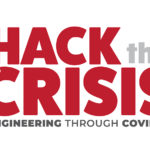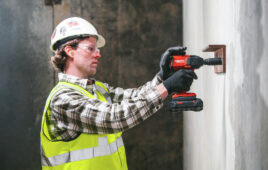Brandon Willis has had a year of challenges — but good ones. Despite the pandemic, he relocated to a new state with his family, bought a new home, and started a new job with an impressive role.

Brandon Willis
“I started with Epoxy Technology on September 1st of this year,” he says. “I’ll admit it was a little stressful because the timing was extremely compressed but it’s worked out incredibly well.”
Willis is the new president of the Electronics Division of Meridian Adhesives Group, of which Epoxy Technology, Inc., a manufacturer of specialty adhesives for advanced tech, is one company. However, his role also covers Epoxy Technology Europe and Epoxies, Etc., a manufacturer of customized epoxy, polyurethane, and silicones for a variety of industries.
These companies, including several others, fall under the portfolio of Meridian Adhesives Group, a U.S.-based manufacturer of high-performance adhesives and sealant technologies (you can read more about Meridian here).
With extensive adhesive experience and a B.Sc. degree in Chemistry, it’s obvious why Willis was chosen for the job.
“I’m a chemist by trade. I started out formulating polyurethane coatings for the automotive industry…and worked my way up through the technical ladder until I was managing R&D.” His career began at Indiana-based Red Spot Paint & Varnish Company, which develops highly engineered performance coatings. “Eventually, I was asked to take over the marketing and product management, and then I took over business development. When I left there, my title was somewhat all-encompassing as a commercial manager.”
Willis spent about 17 years at Red Spot before moving to Uniseal, Inc., a provider of epoxy, PVC, and rubber-based adhesives to the global transportation sector. After only three years at Uniseal, he was chosen as the company’s third president in over a half-century of operations. “We developed high-strength, structural adhesives for automotive bonding. Most people don’t realize that their cars are, for the most part, glued together,” he laughs.
After a decade at Uniseal, he led that company through a major acquisition. “We were purchased by LG Chem in 2018 and I helped lead that process and integration of the company.” LG Chem is currently the 10th largest chemical company, worldwide. Then, Willis heard about the position with Meridian, managing multiple companies.

An encapsulate or potting compound used for an electronic-circuit board.
“The opportunity just felt right and, to be honest, I’m excited about the challenge. I enjoy working at a fast pace and supporting and experiencing the growth process of a company, which includes acquiring new companies — and that’s what we’re building on here,” he shares. “We aim to be the go-to adhesives company in the electronics space.”
Currently, Meridian owns eight companies. Epoxy Technology is one that was originally founded in the ’60s by Frank W. Kulesza, a chemical engineer who had experience working at electronics company, IBM. As a pioneer in the conductive adhesive industry, Kulesza sought to replace eutectic bonding in hybrid microelectronic assemblies.
“This was in 1966 and Epoxy Technology was one of the first companies to successfully manufacture specialty, epoxy products that were electrically conductive,” says Willis.
In fact, Kulesza’s goal was to completely replace eutectic bonding (or soldering) in hybrid microelectronic assembly. He eventually formulated and shared what has become some of the most relied upon epoxy adhesives, which are still in use today.
“He basically developed custom-formulated products that helped PCB manufacturers build electronics,” says Willis. “And, at that time, such components were soldered together. So, the idea of using a conductive paste or adhesive to replace solder was quite novel.”
As one example, this included developing silver-conductive adhesive for use in place of solder for radio transmitters and receivers, radar, and Satcom devices. Since then, the company has expanded and the product lines have grown extensively to meet several different requirements.
“There’s been a tremendous amount of advancement in terms of the durability of the materials and the performance requirements. Where at first, it was mostly about manufacturing an adhesive product that could be used in electronics to replace soldering, it has become about formulating products that can resist shock or vibration and endure extremely harsh conditions,” explains Willis.
Just think of your smartphone that can now withstand the shock of being dropped or hours of moisture and cold if you’re out, say hiking, with it on a rainy day.

Careful dispensing of an adhesive onto an optical filter and into the perimeter ring housing.
“At the same time, these formulas must remain thermally and electrically conductive and meet the ongoing trend of miniaturization,” he adds. “As the components get smaller and smaller, performance must increase from a process standpoint, which leads to a lot more heat generation. So, we’ve had to formulate products that are very good at removing heat from the critical components that are inside electronics.”
What’s more is changes in the application methods have had to follow suit. Where once a simple, large drop of adhesive from an applicator could work on a component, miniaturization fails to allow that same luxury.
“Now, we’re primarily using micro syringes and micropipettes to get the droplet size as small as possible so they don’t take up precious real-estate on printed-circuit boards,” explains Willis. “This requires specific formulations and precision. But it’s worth it because of the advances…I mean who would have thought we could carry around a computer in your pocket that’s capable of so much?”
Epoxy Technology covers more than smartphones and computers. Its products are also largely found in medical devices, automotive electronics, fiber optics and optoelectronics, photovoltaics, as well as some in the military and aerospace sectors.
One major advancement was the company’s EPOTEK 353ND, which is now typically recognized as the go-to adhesive for fiber optics. “One of its original applications was for flexible endoscopes used in hospitals, which require flexible fiber optics to work,” explains Willis. “EPOTEK 353ND is used in bonding the fiber into ferrules, allowing the transmission of light in the 800 to 1550nm range.”
This adhesive’s exceptional optical properties have since enabled the use of advanced endoscopes, which have led to cutting-edge surgery practices in the medical field.
“Our primary business is solving problems,” shares Willis. “Most of the requests we receive are for specific applications that require some form of customization. For example, this could be meeting a set curing window for an epoxy formulation because timing is an issue. Most of what we offer is individualized for a set user and we have a small, but talented R&D team that does so exceptionally well.”
Within these parameters, Epoxy Technology is also dedicated to meeting the high standards of ISO 9,001 certification for quality management, MIL-STD 883/5011 military certification, and is RoHS Compliant in relation to hazardous substances.

Learn more about EPOTEK 353ND here.
“We’re environmentally conscious and have tried to stay ahead of the curve, which means we don’t use heavy metals, hazardous materials, and nearly zero solvent,” he says. “This can bring added challenges when formulating products but it’s well worth it. We’re also a part of the Sony Green Partnership.” This program supports the production of environmentally safe and sensitive products.
Of course, it helps to be part of a global adhesive umbrella under Meridian, which provides access to a wider portfolio of products, expertise, and support.
“We’re really of the mindset that it takes a village,” says Willis. “So, building out a supportive network that can supply the products and standards customers request in the timeframe that they require is extremely important to us. And we want to be as flawless as possible in that approach.”
He adds: “And from what I’ve seen and experienced so far in my new role, the Meridian team does an excellent job of this and is only going to continue to expand.”









Tell Us What You Think!